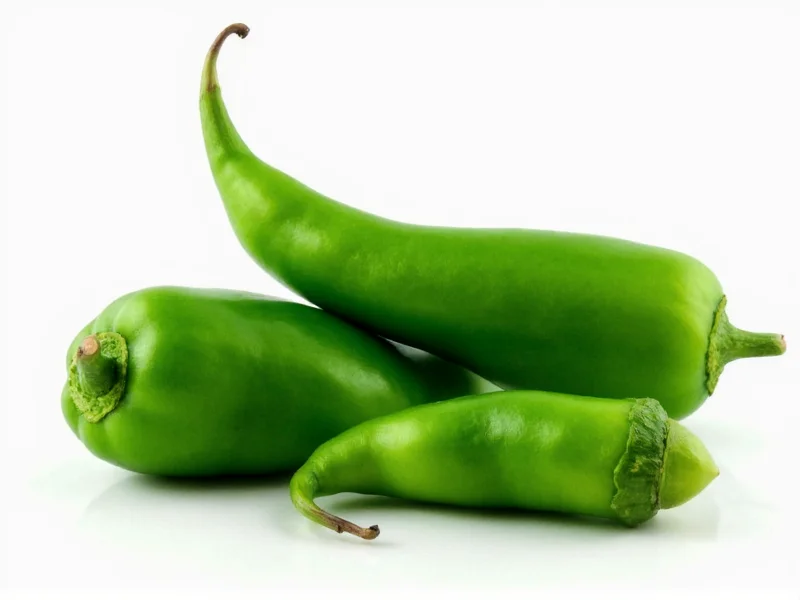Understanding the Scoville scale is essential for anyone working with chili peppers. Developed by pharmacist Wilbur Scoville in 1912, this measurement quantifies capsaicin concentration—the compound responsible for a pepper's heat. The Scoville Organoleptic Test originally relied on human tasters diluting pepper extract until heat became undetectable, with the dilution factor determining the SHU rating. Modern high-performance liquid chromatography (HPLC) now provides more precise measurements, though results still convert to the familiar Scoville scale.
Understanding Jalapeño Heat Range
When exploring how hot are jalapeños on the Scoville scale, it's crucial to recognize their considerable variability. While the standard range sits at 2,500-8,000 SHU, several factors influence where individual peppers fall within this spectrum:
- Maturity: Riper, red jalapeños generally pack more heat than their green counterparts
- Stress factors: Water deprivation or nutrient deficiencies can increase capsaicin production
- Genetic variation: Different cultivars like 'Early Jalapeño' or 'Jalafuego' have distinct heat profiles
- Seed and membrane concentration: The placenta (white ribs) contains most capsaicin
This variability explains why why are some jalapeños hotter than others remains a common question among home cooks and chili enthusiasts. A single jalapeño plant can produce peppers with noticeably different heat levels, even when grown under identical conditions.
Pepper Heat Comparison Chart
| Pepper Type | Scoville Heat Units (SHU) | Relative Heat Level |
|---|---|---|
| Bell Pepper | 0 SHU | Mild |
| Jalapeño | 2,500-8,000 SHU | Medium |
| Serrano | 10,000-23,000 SHU | Hot |
| Cayenne | 30,000-50,000 SHU | Hot |
| Habanero | 100,000-350,000 SHU | Very Hot |
| Ghost Pepper | 800,000-1,041,427 SHU | Extreme |
Practical Implications for Cooks
Knowing the jalapeño heat level comparison to other peppers helps home chefs make informed decisions in the kitchen. For those asking jalapeño heat units explained, consider these practical applications:
A single jalapeño contains enough capsaicin to noticeably heat a standard pizza or medium-sized pot of chili. When substituting jalapeños for milder peppers like poblanos (1,000-2,000 SHU), use approximately half the quantity. Conversely, when replacing jalapeños with hotter serranos, reduce the amount by about 30-40%.
Many cooks wonder does removing seeds reduce jalapeño heat. While the seeds themselves contain minimal capsaicin, they're coated with the compound from the surrounding placenta. Removing both seeds and white ribs can reduce heat by up to 80%, making this technique valuable for controlling factors affecting jalapeño spiciness.
Common Misconceptions About Jalapeño Heat
Several myths persist about jalapeño pepper heat range that deserve clarification:
- Myth: Black spots indicate higher heat
Fact: Corking (natural striations) relates to growth conditions, not necessarily heat level - Myth: Smaller jalapeños are always hotter
Fact: Size correlates weakly with heat; growing conditions matter more - Myth: Refrigeration reduces heat
Fact: Temperature affects capsaicin perception but not actual SHU measurement
Understanding these nuances helps demystify the scoville scale measurement for jalapeños and makes working with these versatile peppers more predictable.
Scientific Context of Scoville Measurements
The Scoville scale represents a logarithmic measurement, meaning each step represents a tenfold increase in capsaicin concentration. This explains why the jump from jalapeños (max 8,000 SHU) to habaneros (min 100,000 SHU) feels exponentially hotter rather than merely 12.5 times hotter.
Researchers have identified over 20 capsaicinoid compounds in chili peppers, with capsaicin and dihydrocapsaicin accounting for approximately 90% of the heat. The specific ratio of these compounds affects not just intensity but also the quality of heat—whether it's immediate or delayed, sharp or rounded.
Practical Tips for Handling Jalapeños
When working with jalapeños, consider these evidence-based recommendations:
- Wear gloves when handling multiple peppers, especially when removing seeds and ribs
- Roast jalapeños to mellow their heat while enhancing sweetness
- Balance heat with dairy products (milk, yogurt) or acidic ingredients (lime juice)
- Store fresh jalapeños in the refrigerator's crisper drawer for up to three weeks
- Freeze whole jalapeños for later use in cooked dishes (texture changes but heat remains)
For those exploring comparing jalapeño to other chili peppers, remember that regional growing conditions significantly impact heat. Jalapeños from warmer climates often develop higher capsaicin concentrations as a natural defense mechanism against pests.











 浙公网安备
33010002000092号
浙公网安备
33010002000092号 浙B2-20120091-4
浙B2-20120091-4